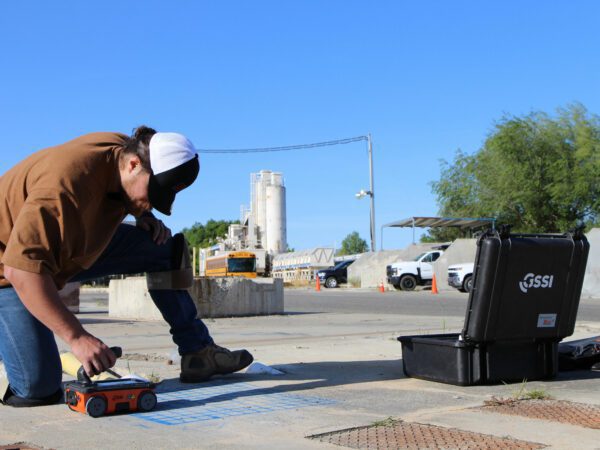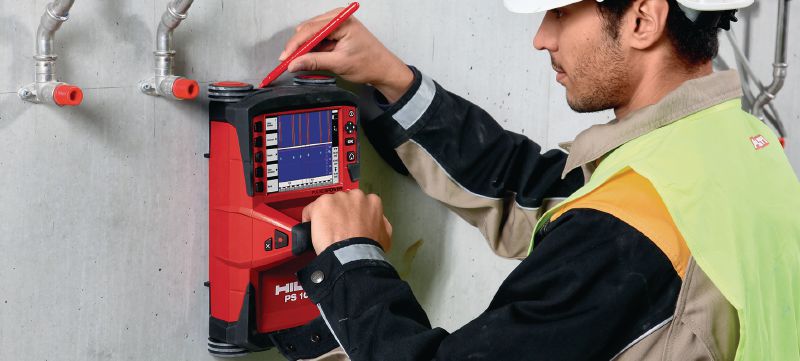RainierGPR Service Areas: Top Concrete Scanning Solutions Across Regions
Concrete Scanning: An Important Action In The Direction Of Ensuring Architectural Honesty and Security
In the world of construction and framework maintenance, the relevance of concrete scanning can not be overemphasized. By utilizing innovative technology and methods, concrete scanning serves as an essential device in guaranteeing that the honesty and safety of structures and bridges are upheld to the greatest standards.
Value of Concrete Scanning
Concrete scanning plays an essential function in making certain the structural stability and safety and security of buildings and facilities tasks. By utilizing advanced innovations such as ground-penetrating radar (GPR) and electro-magnetic induction, professionals can non-destructively check concrete frameworks to identify potential problems, spaces, ingrained things, and support layout. This process enables early discovery of abnormalities that can endanger the security of a framework, avoiding expensive damages and guaranteeing the security of passengers.
Before drilling, reducing, or coring into concrete, scanning aids determine the accurate areas of rebar, post-tension cords, and other ingrained elements, lowering the danger of accidental hits that can lead to structural weak points. Additionally, concrete scanning help in quality control by validating the thickness of concrete covers and identifying any type of discrepancies that might affect the total longevity of the framework.
Technology for Concrete Assessment

Advantages of Very Early Discovery
Prompt discovery of architectural concerns can considerably reduce dangers and make sure the long life of building and construction tasks. By recognizing prospective issues beforehand in the building and construction procedure, stakeholders can take positive procedures to attend to problems before they escalate into bigger and extra expensive issues. One of the key advantages of very early detection is the prevention of structural failings, which can present severe security risks and result in project hold-ups and monetary losses.
Additionally, early discovery enables timely repair work and maintenance, which can aid prolong the life expectancy of the structure. By resolving issues immediately, construction groups can stay clear of pricey fixings or even the demand for early replacement of architectural parts. This aggressive strategy not just saves time and money but likewise boosts the general safety and toughness of the construction task.
In addition, very early detection can improve job planning and decision-making by providing stakeholders with useful insights right into the problem of the structure. Equipped with this information, job supervisors can make educated selections concerning building and construction approaches, timelines, and materials, leading to a lot more successful and effective task outcomes.
Making Sure Architectural Stability
Making sure the architectural stability of a building task is paramount to its security and long life. Structural stability describes the capacity of a building or facilities to maintain its type and feature under various loads and ecological conditions. To attain this, extensive evaluation and surveillance of the framework are essential. Concrete scanning plays an important function in making certain architectural security by detecting potential issues such as voids, delamination, or reinforcement corrosion that could compromise the integrity of the structure over time.
By making use of sophisticated scanning modern technologies like ground-penetrating radar (GPR) and electro-magnetic induction, building professionals can non-invasively inspect concrete frameworks to recognize areas of worry under the surface area. This positive approach enables the very early detection of weaknesses or defects, making it possible for timely repairs or support to stop structural failings.
Routine concrete scanning throughout different construction stages and throughout the life cycle of a framework can assist maintain its stability, minimize dangers, and guarantee the safety and security of passengers. By prioritizing architectural security with concrete scanning, construction jobs can boost their durability and durability, inevitably adding to higher safety and durability.
Protecting Against Vital Failures
Applying regular inspections, such as concrete scanning, can reveal covert problems like spaces, fractures, or rust that might jeopardize the stability of a structure. By using sophisticated scanning innovations like Ground Permeating Radar (GPR) or Concrete X-ray, designers can non-destructively examine the problem of concrete and determine weak points that require reinforcement or repair.

Conclusion
To conclude, concrete scanning plays an important function in making sure structural stability and security by using sophisticated innovation for early detection of potential concerns. This positive technique assists prevent critical failings and guarantees the stability of frameworks. It is necessary to prioritize concrete evaluation as a basic practice to shield the durability and security of buildings and framework.
Concrete scanning plays a vital function in guaranteeing the structural honesty and security of buildings and framework jobs. Furthermore, concrete scanning aids in top quality control by confirming the thickness of concrete covers and identifying any kind of inconsistencies that might impact the overall longevity of the structure. Concrete scanning plays a crucial function in ensuring architectural stability by identifying prospective issues such as gaps, delamination, or reinforcement deterioration that might endanger the integrity of the framework Discover More over time.

In verdict, concrete scanning plays a critical role in guaranteeing structural integrity and safety by making use of innovative modern technology for very early discovery of prospective problems.